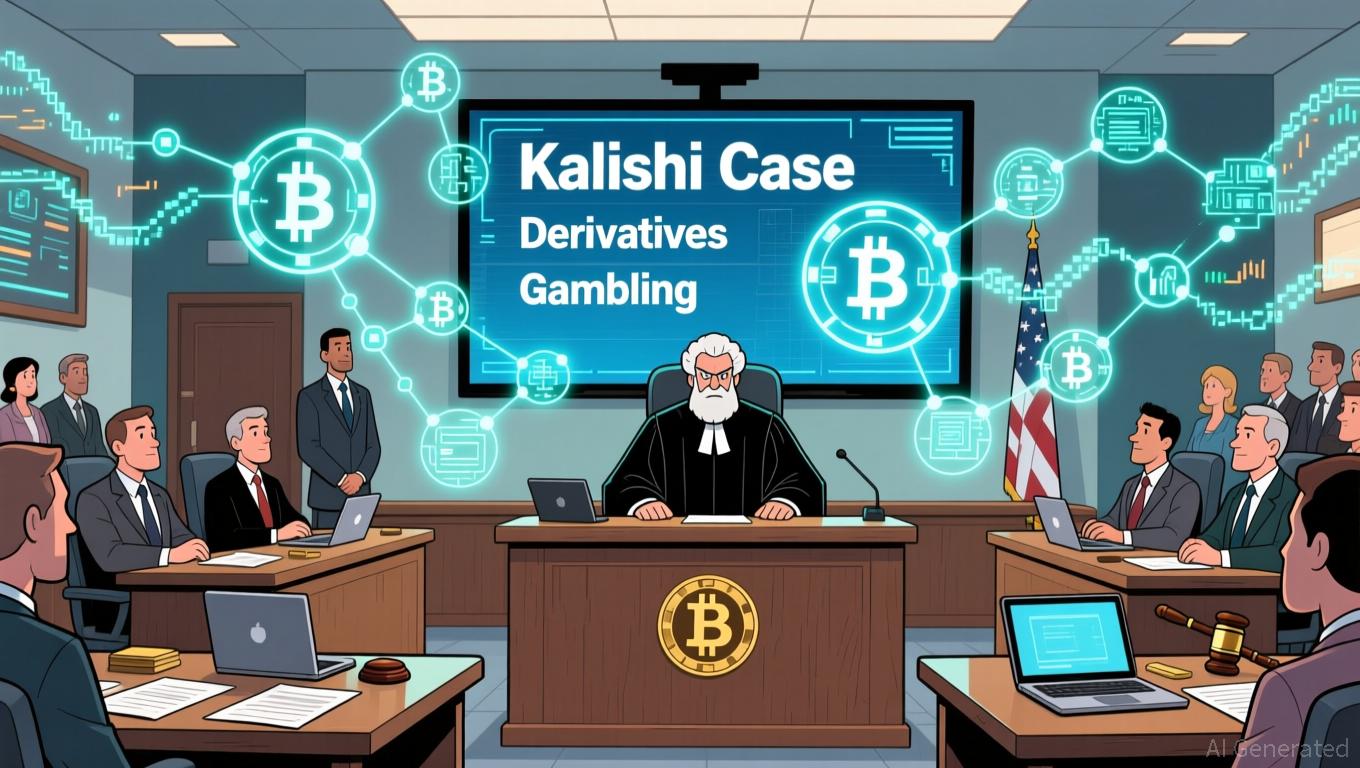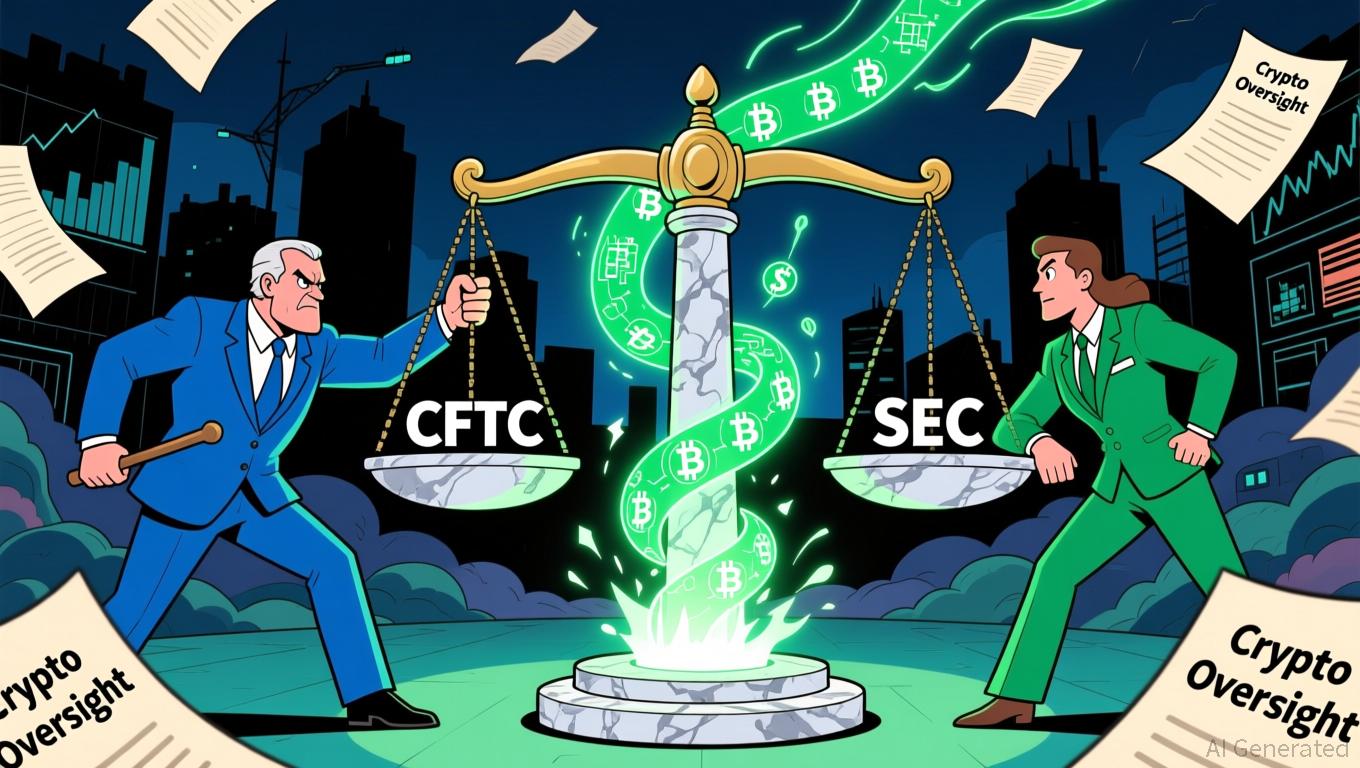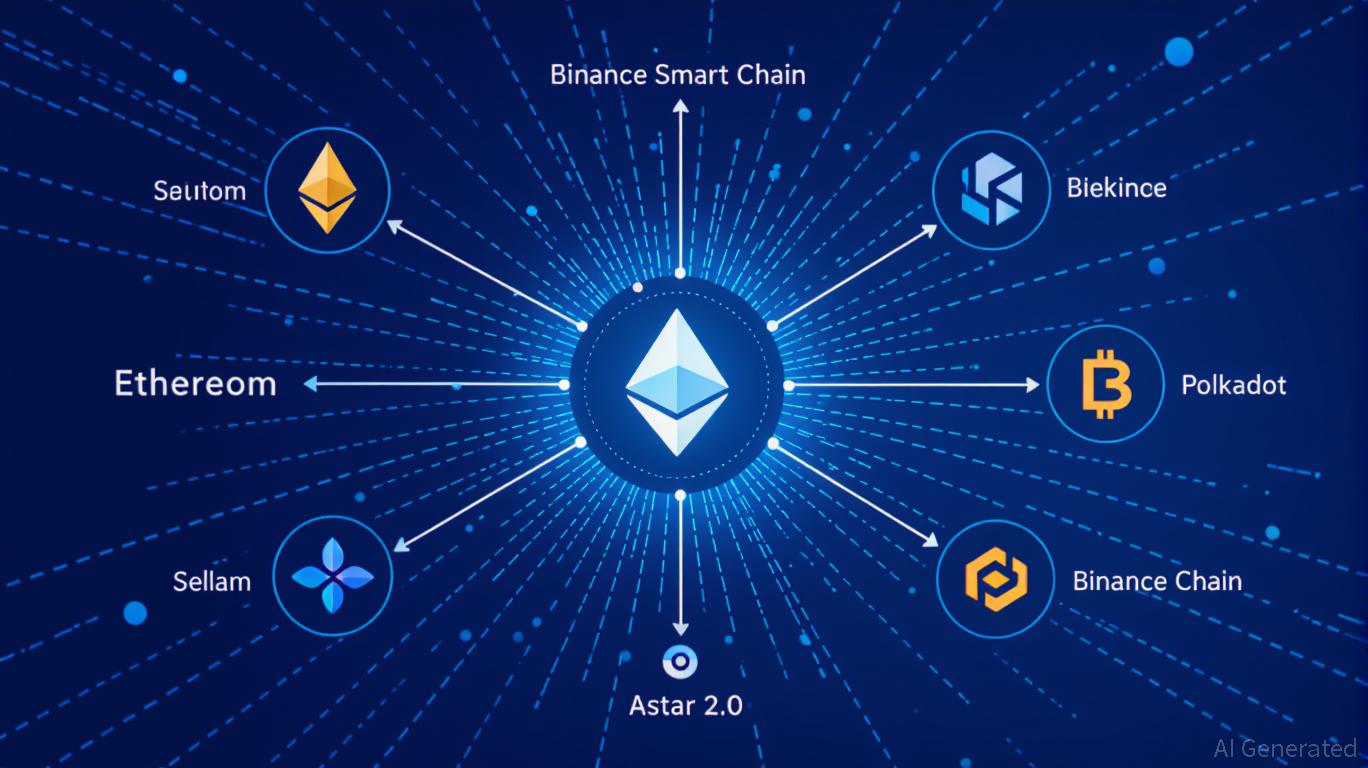Blockchain Betting's Legal Challenge: Is It Considered Gambling or a Derivative?
- NBA star Tristan Thompson advocates blockchain-based sports prediction markets, aligning with DeFi's potential to transform fan engagement. - Kalshi faces legal scrutiny as a federal judge questions whether its event contracts qualify as derivatives under U.S. commodity laws. - Blockchain startups like Ideosphere and Portage Biotech explore prediction markets for scientific funding, leveraging tokenized assets and staking revenues. - Regulatory ambiguity over derivatives vs. gambling risks stifling innov
Tristan Thompson, once an NBA standout and now a blockchain innovator, has become a prominent supporter of sports prediction markets, using his influence to showcase how decentralized finance (DeFi) could transform the sports betting landscape. His recent remarks and financial backing reflect a wider movement within the industry, as firms such as Kalshi and Ideosphere work through regulatory and legal complexities to broaden the reach of prediction markets. Still, the future remains uncertain, especially as courts deliberate on whether these platforms comply with current U.S. commodity trading regulations.
The regulatory environment for sports prediction markets shifted significantly in late November when a federal judge in Nevada expressed doubts about Kalshi's argument that its offerings should be considered derivatives instead of gambling products. In a legal dispute over the company's compliance with the Commodity Exchange Act, Judge David C. Borman questioned if Kalshi's event contracts—which are essentially bets on sports results—could be categorized as swaps or futures. "Your definition seems so expansive that almost anything could be labeled a swap," Borman commented,

The larger economic backdrop also supports the growth of prediction markets. While AI-related stocks have experienced instability amid doubts about their long-term prospects, blockchain-driven platforms are becoming popular alternatives to traditional betting. For instance,
Thompson's support fits within these developments, as he champions blockchain-based solutions that emphasize openness and user autonomy. Nonetheless, the industry's expansion depends on clarifying regulatory uncertainties. The outcome of the Kalshi case, in particular, could establish a benchmark that either validates or restricts the evolution of prediction markets.
Disclaimer: The content of this article solely reflects the author's opinion and does not represent the platform in any capacity. This article is not intended to serve as a reference for making investment decisions.
You may also like
SEI Faces a Turning Point: Will It Be a Death Cross or a Golden Cross?
- SEI , Sei's native token, shows early recovery signs amid crypto market slump, with technical indicators suggesting potential breakout from prolonged consolidation. - Despite 2.83% 24-hour decline to $0.17, increased $114.1M trading volume and TD Sequential buy signals highlight critical inflection point potential. - Market analysis identifies $0.1756 support and $0.1776 resistance levels, with death cross risks below $0.1745 and golden cross potential above $0.1787. - Fear/greed index at 25 reflects ext

Bitcoin News Update: CFTC's Broader Role in Crypto Regulation Ignites Discussion on Clearer Rules
- U.S. lawmakers propose expanding CFTC's crypto oversight via a bill reclassifying spot trading, diverging from SEC's enforcement approach. - Harvard University invests $443M in BlackRock's IBIT ETF, reflecting institutional confidence in crypto as a legitimate asset class. - DeFi projects like Mutuum Finance raise $18.7M in presales, leveraging regulatory momentum and transparent on-chain credit systems. - RockToken's infrastructure-backed crypto contracts attract long-term investors with structured yiel

DASH Aster DEX's Latest On-Chain Growth and What It Means for DeFi Liquidity
- DASH Aster DEX leads 2025 DeFi shift with hybrid AMM-CEX model and multi-chain support (BNB, Ethereum , Solana), boosting TVL to $1.399B and Q3 daily trading volumes of $27.7B. - Platform's 1,650% ASTER token price surge post-TGE attracted 330,000 new wallets, with 94% of BSC-USD volume ($2B/day) driving institutional adoption via Binance/YZi partnerships. - ASTER token mechanics enable 80% margin trading, 5-7% staking rewards, and governance rights, while annual 5-7% fee burns create scarcity and align

Astar 2.0: Leading a New Generation of DeFi and Cross-Chain Advancements
- Astar 2.0 introduces a zkEVM mainnet and cross-chain interoperability, slashing gas fees and enabling 150,000 TPS with 2025 scalability goals. - Strategic partnerships with Mazda, Japan Airlines, and Sony demonstrate blockchain's real-world applications in logistics, loyalty programs, and digital asset tokenization. - Q3 2025 data shows $2.38M DeFi TVL growth and 20% active wallet increase, alongside a $3.16M institutional ASTR token acquisition. - The platform aims to solidify its role as a foundational
